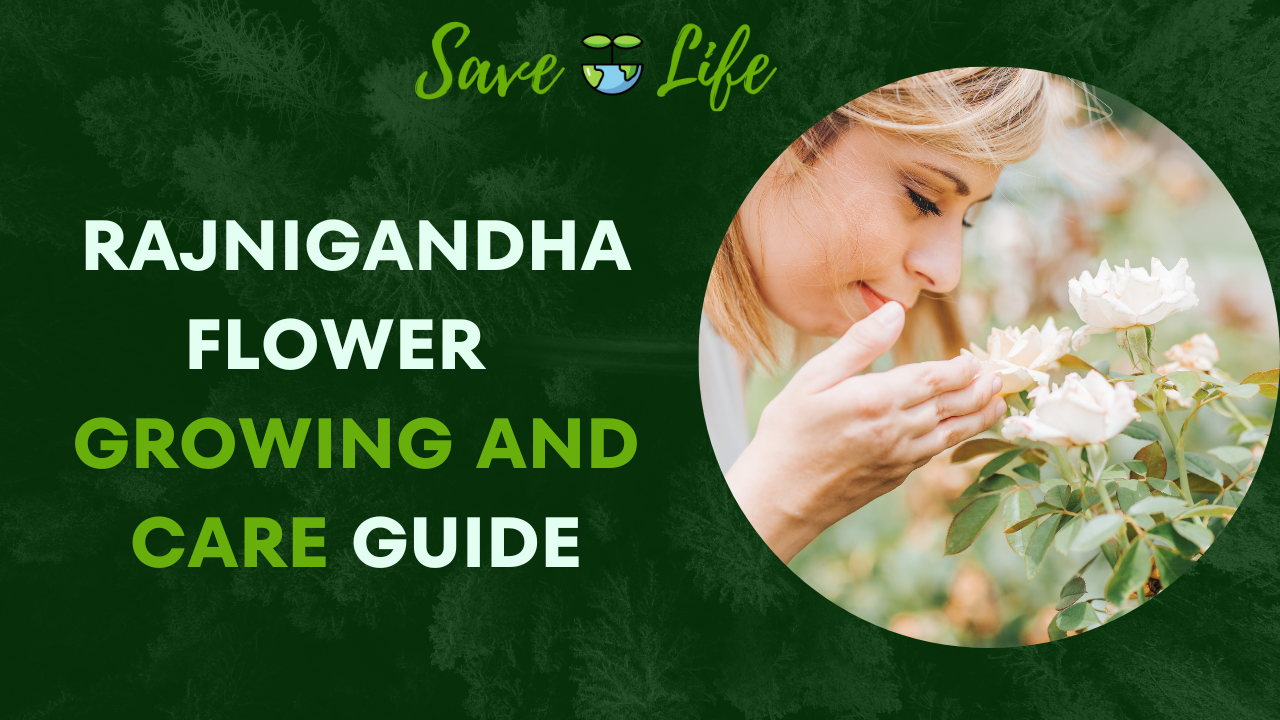Introduction
Welcome to our comprehensive guide to learning about growing and caring for tuberose flowers. Rajnigandha flowers, also known as Rajnigandha, is a wonderful flowering plant that adds beauty and fragrance to any garden. Rajnigandha is also a very beautiful flowering plant to see. Due to which you will get relief from stress and your ability to think and understand will increase. Medicine has also been made from tuberose. By planting it in your garden, you can enjoy everything for free, whether it is medicine or any good fragrance. In this article, we Will offer valuable tips and tricks to help you grow and care for tuberose flowers in your garden with success.
1: Understanding Rajnigandha Flowers
What are tuberose flowers?
Tuberose flowers, scientifically known as Polyanthes tuberosa, are native to Mexico and belong to the Agave family. Rajnigandha flower is often known for its branched form and very good fragrance because this plant is often discussed for its beauty. The specialty of these exquisite flowers is their long white flowers and intoxicating aroma. They are widely cultivated for their ornamental value and are often used in flower arrangements, perfumes and in religious ceremonies.
Importance of tuberose rajnigandha flowers
Tuberose flowers have great cultural and medicinal value in various parts of the world. In Indian culture, they are often associated with love, purity and their beauty and prosperity. These flowers are used in religious rituals, weddings and festivals to create a cool and fragrant atmosphere
Also Read: 365 days flowering plants in india
2: Growing Rajnigandha Flowers
Selecting the Best Location
The choice of an appropriate place is crucial to ensuring the best growth possible for Rajnigandha flowers. Choose a location in your garden that gets at least six hours a day of direct sunlight because these plants do best there. Additionally, make sure the soil has good drainage to avoid water logging because too much moisture might cause root rot.
prepared soil
To give tuberose bulbs a nutrient-rich environment, prepare the soil before planting. Clear the planting area of any trash first. Utilizing a garden fork or plowshare, loosen the soil and add organic material, like compost or well-rotted manure. And to encourage healthy growth, irrigate the soil only sparingly. This will enhance drainage, soil fertility, and general structure.
3: Caring for Rajnigandha Flowers
Watering
The Rajnigandha flowers good growth depends on appropriate irrigation. After planting the bulbs, keep the soil continuously moist but not overly saturated throughout the initial phases. Once the plants are established, give them a thorough watering once a week to keep the soil equally moist. Avoid overwatering at all costs because it might cause root rot and other fungi problems.
Fertilizing
It is advised to fertilise Rajnigandha flowers plants frequently in order to encourage strong development and a profusion of blossoms. In the growing season, apply a balanced, slow-release fertiliser. For the right dosage and frequency, according to the package instructions. To increase flower production, additionally think about adding phosphorus-rich fertilizers to the soil.
Mulching
When it comes to caring for Rajnigandha flowers, mulching offers a number of advantages. A layer of organic mulch, such as straw or wood chips, aids in the retention of soil moisture, inhibits the growth of weeds, and controls soil temperature. Apply a layer of mulch about 2-3 inches thick all around the plants, being careful to keep it away from the stems to avoid rotting them.
4: Dealing with Common Pests and Diseases
pest control
While tuberose rajnigandha flowers are generally resilient, they can be overstimulating to some insects. Keep an eye out for common invaders such as aphids, mealybugs and spider mites. Spray the kit regularly to ward off mealybugs and spider mites. Inspect plants regularly and take appropriate measures, such as using organic insecticides or implementing natural pest control methods, to prevent infestations and minimize damage.
Health Promotion
Rajnigandha Flowers are susceptible to fungal diseases, especially in humid weather or when they are exposed to a lot of moisture. Avoid overwatering and make sure there is adequate air circulation around the plants to reduce the danger of illnesses like powdery mildew or root rot. If necessary, use fungicides prescribed for the particular disease to treat the damaged plants.
5: Harvesting and Enjoying Rajnigandha Flowers
Picking Blooms
Rajnigandha Flowers are ideal for cut flower arrangements due to their lovely scent and graceful appearance. When the aroma is at its strongest, in the early morning or late evening, harvest the blooms. Utilizing a pair of clean, sharp pruning shears, trim the stems immediately above a leaf node. To extend the life of the flowers in the vase, put them in a bucket of water right away.
Taking in the Scent
Experiencing the alluring aroma of Rajnigandha flowers blossoms is one of the biggest pleasures of cultivation. To savor their alluring smell, arrange a bouquet of just gathered flowers in your living room or bedroom. The dried flowers can also be used to make potpourri or scented sachets, filling your house with their lovely perfume for months to come.
6: Conclusion
Finally, for any garden fan, tuberose flowers are a great treat. They’ll grace your landscape thanks to their heady scent and ethereal elegance. And you will find that this plant becomes the most beautiful and attractive plant in your garden. If you follow the instructions in this article carefully, you will undoubtedly be successful in growing and caring for tuberose flowers, and helping others grow those that turn your outdoor space into a serene and fragrant sanctuary. can change.
Remember to give them ample sunlight, well-draining soil, and regular watering. Use proper fertilization, mulching and pest control techniques to ensure healthy growth. And make a good place for air to go to them and they can get proper sunlight so that the water of the plants can dry up. Finally, savor the exquisite blooms and their delectable scent, in flower arrangements or as a natural air freshener in your home.
So, why wait? Start Rajnigandha Flowers cultivation now and enjoy having these mesmerizing beauties in your garden and stay stress free to keep your body in good and healthy condition!
Save Earth Life is all about gardening and planting trees to save nature. Here you can check variety of topics including Informative facts about plants and trees, Creative gardening ideas How to grow & care plants, Flower Etc.
Now that you have come across the top 10 summer vegetables in India, it is time to roll up your sleeves and start gardening. Best of all, remember to provide your plants with enough sunlight, water and nutrients for growth. Get creative in the kitchen and explore a variety of recipes to get the most out of your home produce.


